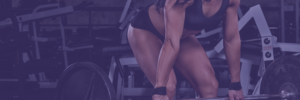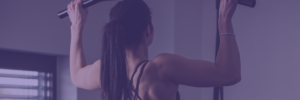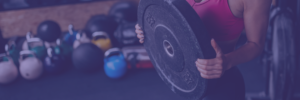I’m going to give it to you straight; figuring out what exercises to do in the gym can be confusing. From “Fitfluencers” on TikTok to the hundreds of fitness apps, the plethora of exercises bombarding gym newbies is overwhelming. As dancers, we are acutely aware of the repercussions of an injury from the gym. So it’s no surprise that a lot of us are deterred from lifting weights when the “how” of it all is unclear. Never fear; we are going to break down functional strength training today.
First, we must learn that there are two main approaches to lifting weights: Traditional Strength Training and Functional Strength Training.
Think of traditional strength training like your isolation in dance class. You are focusing on one specific muscle group and putting it under stress with weight to make it stronger. An example of this would be hamstring curls. You’re specifically curling the hamstring in isolation from your other leg muscles. In your daily life you don’t necessarily need to isolate just your hamstring, but making it stronger has benefits for jumps, joint health and more. Just like learning to isolate your head helps you spot more cleanly and strengthens your neck.
Functional Strength Training, on the other hand, improves your body’s ability to perform everyday functions. Think of this like your plies, relevés, tendus, and balance–foundational movements that are a consistent part of your dancing. There are five functional movements that are the perfect building blocks for a full-body lift session at the gym. So, let’s get into it!
1: SQUAT

We hear about squats a lot. But what defines a squat? Simply put, a squat is defined by flexion in the hip, knee, and ankle joints. During your workout this might look like a back squat, goblet squat, or walking lunge. Squats in the gym help us get up and down off the ground or out of a chair – even as we age. In real life, squats can be as simple as sitting down in a chair or running up and down the subway steps to catch a train!
2: HINGE

No, we aren’t talking about Horton Jazz Technique! In the fitness world, a hing occurs when the hip joint hinges backwards causing the torso to arrive at tabletop position. During your workout this could look like any type of deadlift or Romanian Deadlift variation. Its everyday cohort? Bending over to pick something up. Lifting weight through a hinge position decreases your risk of back pain and injury while doing things like moving heavy objects. So next time you’re moving apartments, make sure you work a few of these into your lifting session.
3: PUSH

Push movements occur when a weight is pushed away from the torso. In the gym this would be any type of push-up, overhead press, or chest press variations. In everyday life this looks like closing a door or getting your luggage into an overhead compartment on an airplane. No more relying on the nice dad in the row behind you to help you. You’re a strong independent frequent flier now!
4: PULL

Unlike push movements, pull movements happen when weight is pulled toward the torso. This is where our rows and pull-ups fit into the workout. In “real life” this includes opening a door, or pulling yourself onto an elevated surface like getting up out of a pool…or beating your dog at tug of war!
5: CARRY

This one really is as simple as it sounds. A carry movement occurs when you add weight (or load) to your body and then transport yourself and that weight to another location. In a workout, this would be a suitcase or farmer’s carry. In life, this looks like carrying your Trader Joe’s haul home and up to your third-story walk-up.
So, if you’re looking to create a lifting workout for yourself, try using functional strength training moves. Building your workouts to include one exercise for each of these movements yields an incredibly effective lifting session. And don’t be fooled; each of these functional strength training movements is effective for your dance training as well. Squats translate to deeper pliés for preparations and big jumps. Hinges result in stronger spinal alignment for turns. Push and pull exercises help with floor work and partnering. And carry exercises give us the strength to lug our dance bags around without a care in the world.
So try this format at your next gym session, and let us know how it goes.
Direct message us on Instagram or TikTok. Or tag us in a post to let us know which functional strength training movements you’re working on today. We’d love to see what you choose!
xox Am
PS if you want to work with a pro-dancer/ certified personal trainer who can make tailored training, nutrition, and recovery plans for you, you should check out our 1:1 coaching program, The Embodied Artist Academy

